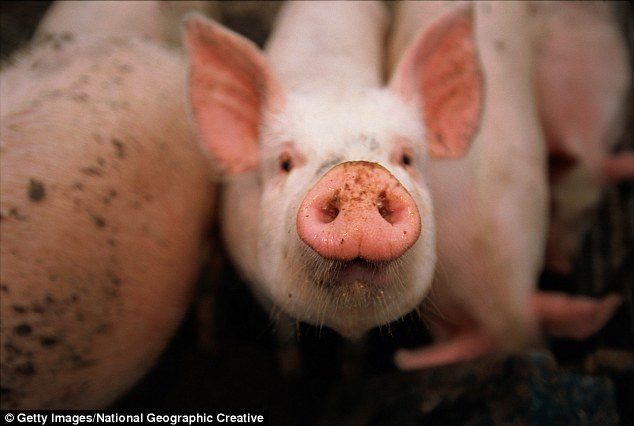Scientists' interest stems from two data points. An epidemiological investigation has indicated that the first person to fall sick was a hunter who had come into contact with a wild boar carcass. And 84 pigs have recently died in eight villages in Nambwa, the epicenter of the current outbreak, according to a report issued yesterday by the DRC's Ministry of Health. Researchers have taken samples from those animals, according to the report, which says a "protocol for investigation of unusual deaths reported in pigs is under development."
"I'm doubtful that the pigs actually carry Ebola, but we have to test them," says epidemiologist Fabian Leendertz of the Robert Koch Institute in Berlin, who has been consulted by the Institute of National Biomedical Research in Kinshasa about the potential link. Indeed, pigs in the DRC frequently die from other pathogens; the country often has outbreaks of African swine fever, which has a very high mortality rate. "Ebola is not even the prime suspect," says Anne Rimoin, an epidemiologist from the University of California, Los Angeles, who has worked in the DRC for 15 years and is there now.
Still, a role for pigs would not come as a complete scientific shock. In 2009, researchers reported in Science that they had isolated an Ebola strain called Reston from pigs in the Philippines that were suffering from a severe respiratory syndrome. Ebola Reston has never been found to cause human disease, but the study found that some pig farmers had antibodies to the virus as well, suggesting that they had been in contact with it.
In 2011, a team by virologist Gary Kobinger of the Public Health Agency of Canada in Winnipeg reported that Ebola Zaire—the strain implicated in the current outbreak as well as the massive West African epidemic—could sicken pigs in the lab as well, and that the virus transmitted easily between pigs housed in the same cubicle. "This observation raises the possibility that pigs are capable of shedding relatively high viral loads into the environment," the researchers wrote. A year later, the group reported that pigs could also pass on Ebola Zaire to monkeys through aerosol. That suggested they might be able to transmit it to humans as well—but nobody knows if that has ever happened. Most Ebola outbreaks are believed to start when a human comes into contact with a bat or a primate infected with the virus.
The Ministry of Health (MoH) report notes that Kobinger has arrived in the country with "new reagents." Science Insider could not reach Kobinger for comment.
If so many pigs in the Nambwa area were infected with Ebola, you'd expect to see more human cases, says Vincent Munster, a virologist at the National Institute of Allergy and Infectious Diseases in Hamilton, Montana, who's also preparing a mission to the DRC. "That said, one needs to remain open," Munster says. "This surely warrants a more thorough investigation."
The first patient or "index case" was a hunter aged 45 who died; his case has been confirmed as Ebola. Both Leendertz and Rimoin say they were told that he had contact with a boar before falling ill. But Rimoin stresses that he may have been in contact with other species as well.
Wild pigs are scavengers, and one possibility is that a wild boar was infected through contact with an ape carcass and passed the infection on to the hunter, Leendertz says. Domestic pigs might then have picked up the infection from humans. That is at least as likely as the opposite possibility: that Ebola has spread in domestic pigs and the animals passed it on to humans. "You can still draw the arrows in either direction," Leendertz says.
To find a "smoking gun" that links pigs to this outbreak, Rimoin says, researchers would need to find Ebola viruses in pigs and show that the genetic sequence closely matched the one in humans. No virus has yet been sequenced from the two confirmed human cases.
The outbreak is in Bas-Uélé province in the northeast of the country; investigating it has been very difficult because the area is so remote. Only two of several dozen human samples so far have tested positive for the virus, and no healthcare workers have fallen ill—which is odd in Ebola outbreaks. There are currently three "probable" and 37 "suspected" cases in seven villages, and four apparently related deaths. Nearly 300 contacts of cases are being monitored.
Meanwhile, an ethics committee in the DRC yesterday approved a clinical study of an Ebola vaccine that might be able to end the outbreak more quickly. The vaccine, produced by Merck, showed promising results during the epidemic in a Guinea study, but remains unlicensed, which is why it can only be used in a formal trial. If the DRC government decides to deploy the vaccine—in addition to standard containment efforts already underway—the trial will be run jointly by MoH and Epicentre, the research arm of Doctors Without Borders.
Comment: According to Science, if the study is approved, the vaccine will "go into the arms of people at risk within 2 weeks."




Reader Comments
to our Newsletter